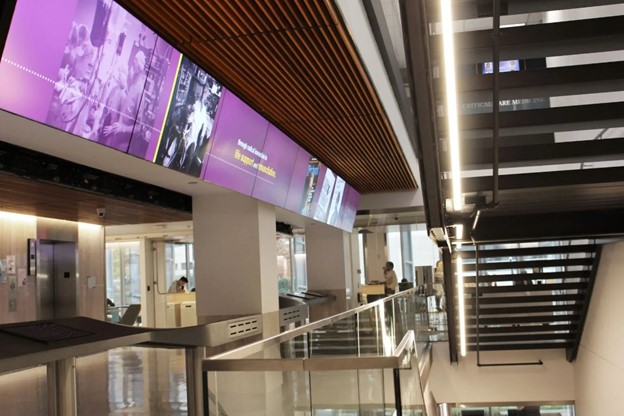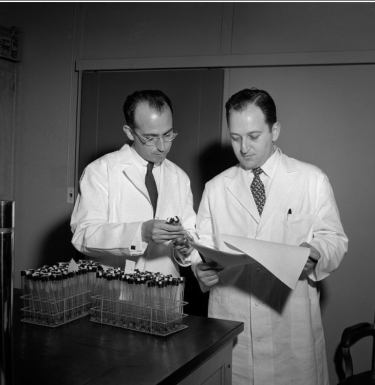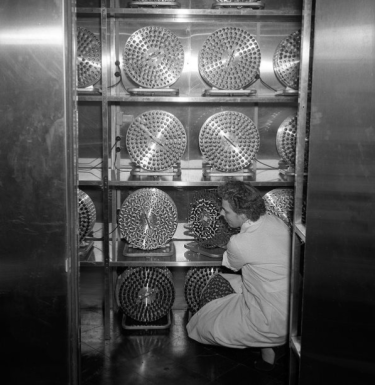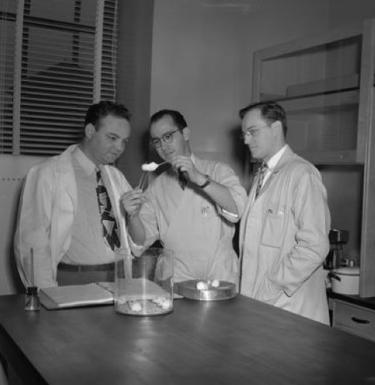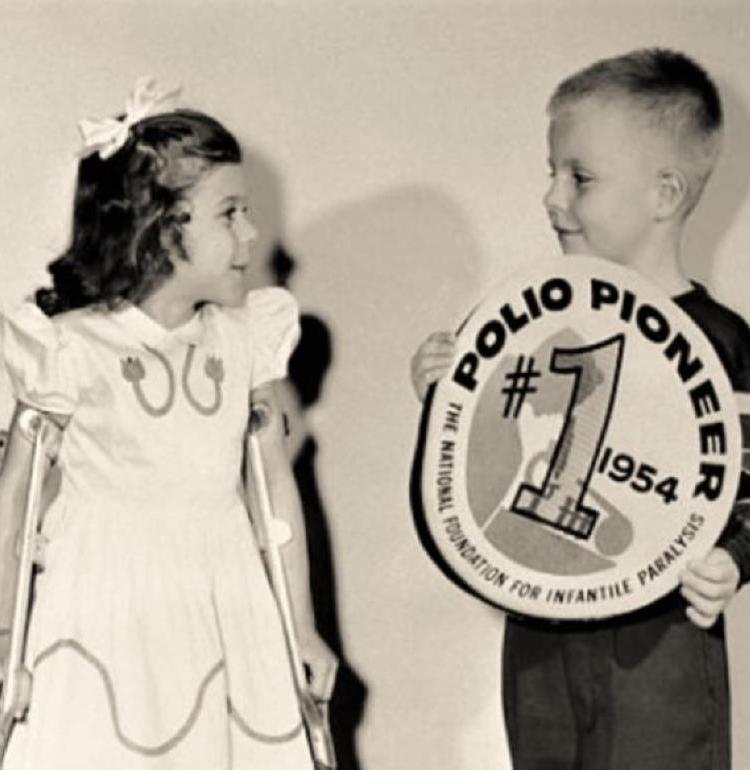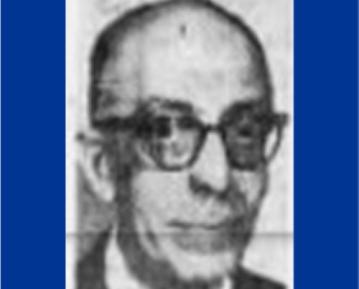Salk and Poliomyelitis
At its peak in the 1940s and 1950s poliomyelitis, also known as infantile paralysis, was an incredibly feared disease that killed or paralyzed millions of children and adults yearly. Summer epidemics of polio among children threatened cities across the country, including Pittsburgh.
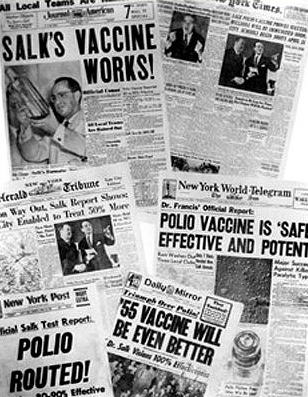
With the goal of minimizing polio’s scourge, Salk and his team, alongside other laboratories across the country, collected and examined samples of polio in order to identify the various strains of the virus. Once all three types of poliovirus were identified, Salk and his team began to develop their vaccine.
Salk’s vaccine was unlike any others of the time. Live vaccines were common practice, and many were afraid of the possibility of a killed virus vaccine. However, Salk understood the effects of this infectious disease. With polio already at epidemic status, the potential for spreading disease, no matter how minute, was not a risk he was willing to take.
Deciding to face national fear and scientific scrutiny, Salk developed a killed vaccine effective on all 3 types of Polio. Salk’s killed vaccine was administered through a shot, unlike Sabin’s later vaccine. Sabin administered his live vaccine orally through a sugar cube. Although Sabin’s vaccine was less costly in production, it did not represent the same certainty as Salk’s.
Pittsburgh and Polio
The first volunteers in the world to be given the vaccine were patients at the D.T. Watson Home in Sewickley, PA. These studies are known as phase I trials. At D.T. Watson safety and dose findings were made possible. During this same time, trials occurred at the Polk School in Venango and Leetsdale County. In total, these first phase trials were completed with the volunteering of over 630 brave individuals.
were patients at the D.T. Watson Home in Sewickley, PA. These studies are known as phase I trials. At D.T. Watson safety and dose findings were made possible. During this same time, trials occurred at the Polk School in Venango and Leetsdale County. In total, these first phase trials were completed with the volunteering of over 630 brave individuals.
After this success, phase II trials in school children could begin. For this, Salk engaged local Pittsburgh area public, parochial, and private schools. During phase II process, first, second, and third grade school children in the Pittsburgh area were put into two groups
- Vaccine A Participants - 5,409 children who were vaccinated and periodically checked for safety and development of antibodies
- Extended Phase Participants - 5,373 participants vaccinated with a serum manufactured outside of Salk's laboratory who were also periodically checked for antibodies.
Both phase II groups were found successful!
In total, 7,500 Pittsburgh school children were given the earliest versions of the vaccine months before the national trial. Salk was able to spread relief and immunization locally due to this contribution. Without this city's courage and willingness to band together to fight Polio, Jonas Salk's legacy may not be remembered today. Salk's vaccine is Pittsburgh's vaccine.
National Vaccine Trials
The Salk team then served as a laboratory reference for the large 1954-1955 Phase III Field Trial of the Salk vaccine. Phase III was carried out by the National Foundation for Infantile Paralysis among 1.8 million school children nationwide.
Participants in this large national trial earned the sobriquet “Polio Pioneer.” There were four Phase III Field Trial sites in Pennsylvania, in Center, Clinton, McKean, and Mercer Counties, all small counties distant from Pittsburgh with participants equating to 5,655.
sobriquet “Polio Pioneer.” There were four Phase III Field Trial sites in Pennsylvania, in Center, Clinton, McKean, and Mercer Counties, all small counties distant from Pittsburgh with participants equating to 5,655.
Pittsburgh was not a site for the Phase III Field trial, so no one in Pittsburgh was an official “Polio Pioneer.” When the Phase III Field Trial was completed and announced to be safe and effective in 1955, the Salk vaccine was immediately licensed and distributed.
